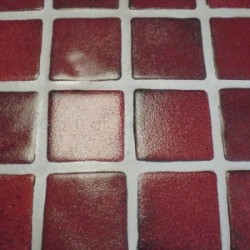Tile on Concrete
Yes, in fact concrete is one of the better base surfaces for tiling. You just need to make sure of a few things first:
Concrete Should Be Dry
Any moisture will affect your tile installation. No, it’s not as grave a thing as if you laid wood floor on moist concrete, because tiling does involve moisture. If the concrete has recently been laid, you’ll want to wait several days or even longer to make sure the concrete is properly cured.
How moist is too moist? Tape clear plastic over the surface and wait a day–beads of water underneath indicate that the concrete is too moist for tiling.
No High Areas
Chop down bumpy, ridge-type crap with your mortar chisel (a nice tool to have on hand, by the way). Smoother, more undulating hills are actually more of a problem because they can’t be chipped away. You may need to rent a concrete grinder.
But one of the great things about installing tile on concrete is that tile can conform well to these sloping areas. It’s just a matter of how much curviness you want to tolerate.

Got Holes?
Holes in concrete are easy to repair. No need to mix up a whole bag of concrete; just get smaller-size concrete patch mix from the hardware store and screed smooth with a piece of waste 2×4. Don’t make your repair beautiful. It’s going to get covered with tile. Flat is all you need.
Stabilize Cracks
If you have a crack now, it will be a larger crack later on. Cracks always expand. Get serious about cracks and stabilize them before you put tile on concrete.
Dry and Rough
Get any kind of shiny treatment stuff (i.e., sealers), oils, paint, etc. off of your concrete. If you rented a concrete grinder, you can roughen up the entire surface with the grinder. Or you can rough up concrete by hand. Either way, dry and rough is how the concrete should feel before installing tile.